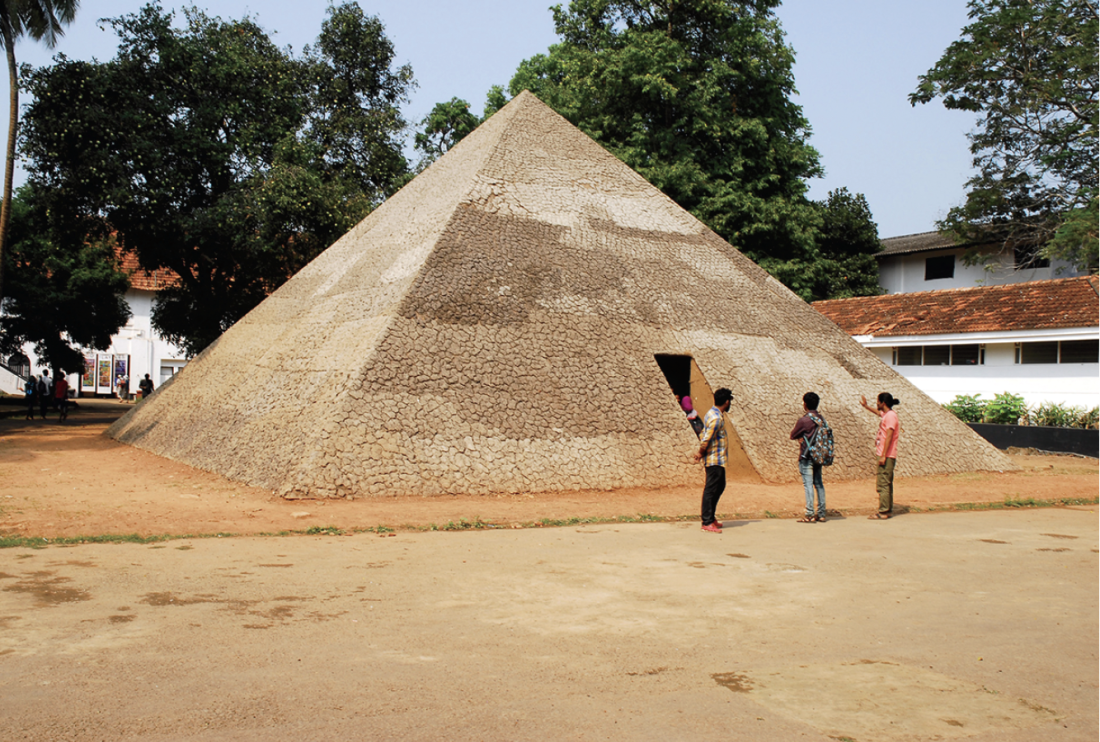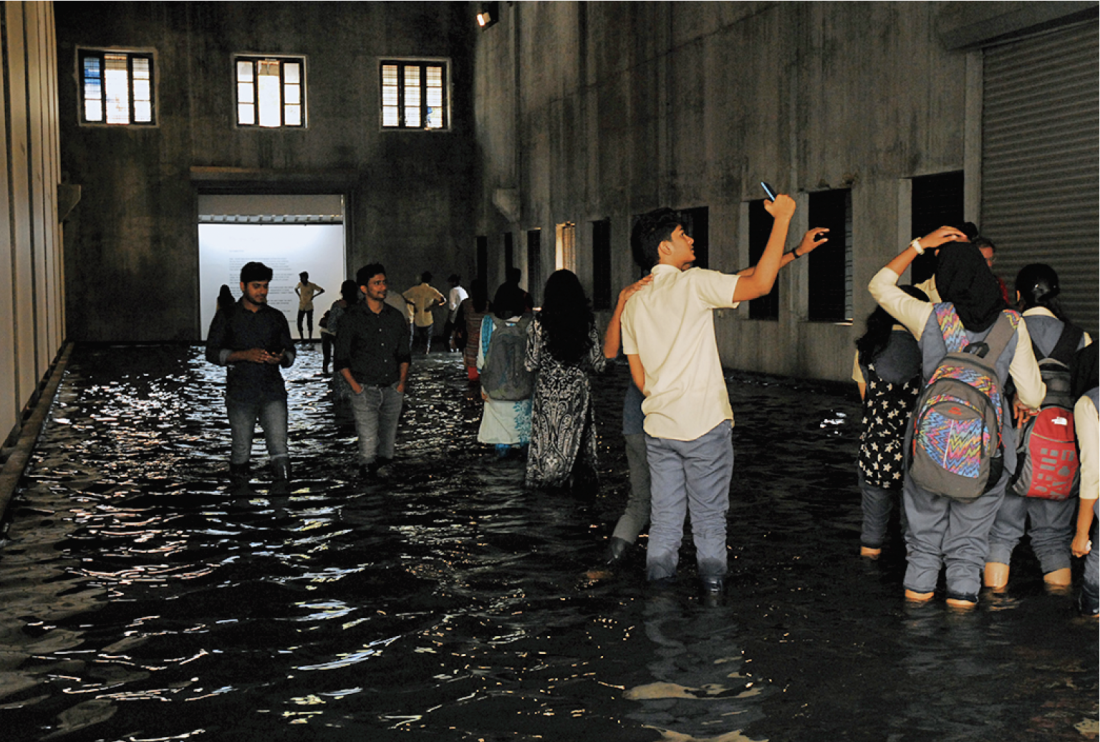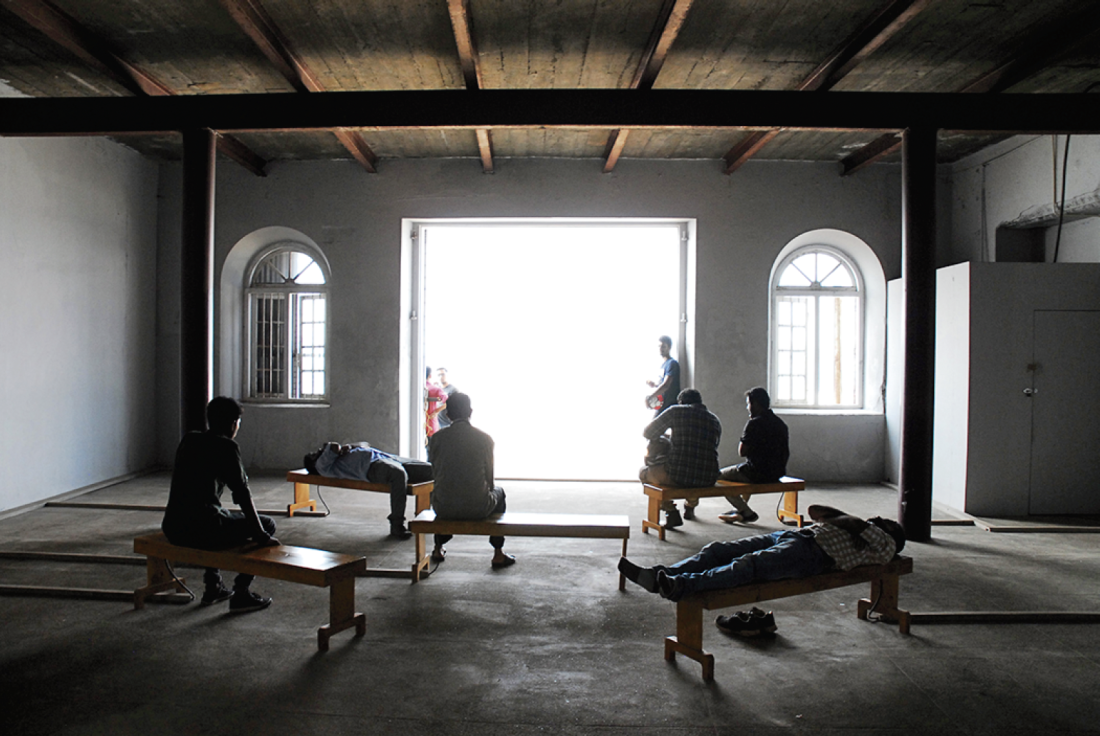Kochi-Muziris Biennale 2016
For this, the third Kochi-Muziris Biennale (KMB), curator and artist Sudarshan Shetty has assembled 97 artists from 31 countries, including 36 from India, 8 of whom are from Kerala state. On display is a diverse range of mediums, stylistic approaches and sensibilities represented by poets, musicians and performers alongside a wide array of visual artists. As India’s only biennale and the largest, most anticipated celebration of contemporary art in South Asia, KMB encompasses 11 venues in the tricities of Fort Kochi, Mattancherry and Ernakulum. There were also numerous satellite events, including one exhibition engaging concepts of silence and the transformation of landscape both in India and Canada, co-curated by Tanya Abraham from Kochi and Canadian Wayne Baerwaldt, featuring works by GR Iranna, Shubha Taparia, Sheila Spence and Terry Billings, to name a few. An exhibition on the scale of KMB inevitably raises issues of inclusion and exclusion, but some other notable works included a gargantuan outdoor mud structure, The Pyramid of Exiled Poets by Aleš Šteger; Daniele Galliano’s deliberately unlearned paintings from his series “Bad Trip”; C Bhagyanath’s delicate charcoal figure drawings overlaid on transparent sheets, titled Secret Dialogues; and Hanna Tuulikki’s Sourcemouth: Liquidbody, an intricate audiovisual installation incorporating aspects of Sanskrit theatre.

Aleš Šteger, The Pyramid of Exiled Poets, 2016, architectural structure and installation with mixedmedia and recordings. All images courtesy of Arni Haraldsson.
Shetty, whose own work has been exhibited at Tate Modern and the Guggenheim, has titled the biennale “Forming in the pupil of an eye,” a line derived from poet Sharmistha Mohanty’s work, I make new the song born of old, a text- and light-based installation projected to flow down the wall and onto one of the floors at Aspinwall House—this being the main venue, situated within a spectacularly crumbling spice warehouse complex from the colonial era and overlooking the Malabar coast. Indeed, two tropes resonate throughout the biennale: poetry and water, which together represent the fluidity and multiplicity the title strives to embody.
Mention should also be made here of some of the challenges that impacted the biennale organization, the artists and visitors alike, namely the demonetization crisis that had begun back in November 2016. Ostensibly to lessen corruption, the Modi government suddenly decided to withdraw significant rupee notes from circulation, to be replaced with limited, 2,000- rupee notes. While KMB organizers struggled to pay workers prior to the opening reception, visitors endured lengthy queues to withdraw notes for which they might not receive change because of the scarcity of small notes that the demonetization policy caused. Needless to say, this made day-to-day transactions a challenge for poor and privileged alike.

Raúl Zurita, The Sea of Pain, 2016. Installation with water.
Just as the biennale organization and its visitors were not immune to politics, having to negotiate between art and the everyday, so, too, did a number of artists address notions beyond the purely aesthetic to incorporate current political issues. One such artist (the first to be selected for the biennale) is Chilean poet Raúl Zurita, whose immersive installation The Sea of Pain is dedicated to five-year-old Galip Kurdi, who, along with his mother and younger brother, Aylan, perished on 2 September 2015. Aylan became an icon of the Syrian crisis after a photograph showing his lifeless small body washed ashore near Bodrum, Turkey, was disseminated around the world. The death of Aylan, whose family was seeking reunification with relatives living in Canada, polarized the issues surrounding immigration in this country. Visitors to Zurita’s installation were invited to shed their footwear and wade through a warehouse of shallow seawater to read a short text at the other end. “Don’t you listen? Don’t you look? Don’t you hear me? Don’t you see me?” Zurita asks his audience. The artist’s use of the element of water within the site speaks of constant erasure, yet the undulations of remembrance elicited by the phrase “In the sea of pain,” repeated along the containing walls, suggest that the answer to his questions will vary from viewer to viewer. Zurita’s gesture is as much a politicization of aesthetics as it is an aestheticization of politics, and as such speaks to the contradictory condition of much contemporary art as a spectacle that wants not to be one.
Adjacent to The Sea of Pain is another installation, equally spectacular but in a different way, titled Prime, by Oslo-based Camille Norment. Situated inside an ambient-lit chamber are a series of wooden benches that face a large open doorway framing a view of a jetty extending out to the sea, the occasional freighter or fishing boat quietly passing by. Upon entering and taking a seat, the viewer detects a subtle but audible, deeply primordial murmur resonating throughout the space. Apparently, these non-lingual compositions were inspired by African-American church practices of moaning. Once registered, the sound is then simultaneously transmitted electronically into the bench, resulting in varying vibrations that move up into the viewer’s spine and head. The experience may come across as invasive and unnerving, but is actually quite stimulating, initiating a state of meditative tranquility that is transformative. Norment prompts her audience into registering their corporeal self in order not so much to hear as to sense sound, whereby sound becomes perceived as something that isn’t strictly ethereal, but that is influencing all that is around us—in the air and inside of us. Norment’s concern is ultimately formal; her focus is on the physicality of sound itself rather than employing sound toward a narrative purpose or attempting to evoke a particular feeling within her audience.

Camille Norment, Prime, 2016. Sound installation.
Together, The Sea of Pain and Prime sum up much of KMB, representing two opposing poles that resonate throughout the exhibition and, by extension, the world of contemporary art. One points directly to a tragedy across the seas and that is ongoing as Aleppo lies in near ruin, while it also invites the viewer to reflect on their place within the world. The Sea of Pain does this in a way that, at the same time, points back to itself as a site of distraction and spectacle (the perfect spot for a selfie). Prime draws on another cultural form, turning inward to focus on the self as a site of pleasurable sensorial experiences, and also looks out toward the sea, inviting us to meditate and reflect, left alone to make of the world out there what we will. ❚
The 2016 Kochi-Muziris Biennale was exhibited at various venues in Kochi, India, from December 12, 2016, to March 29, 2017.
Arni Haraldsson is an artist and writer living in Vancouver. He is an associate professor of photography at Emily Carr University of Art & Design.

